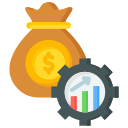Tools, Technology, and Ethics
Spreadsheets are fantastic for exploration, but connected planning tools improve governance, audit trails, and collaboration at scale. Integrate ERP, CRM, and data warehouse signals so your budget reflects reality daily. Where are you on the journey, and what integration scares you most? We can help unpack it.
Tools, Technology, and Ethics
Automate data refreshes, variance calculations, and report distribution so analysts spend time on questions, not copying cells. Robotic process automation and scheduled notebooks save hours weekly. If you reclaimed five hours, which decision would you analyze deeper? Tell us and we may feature your approach.











